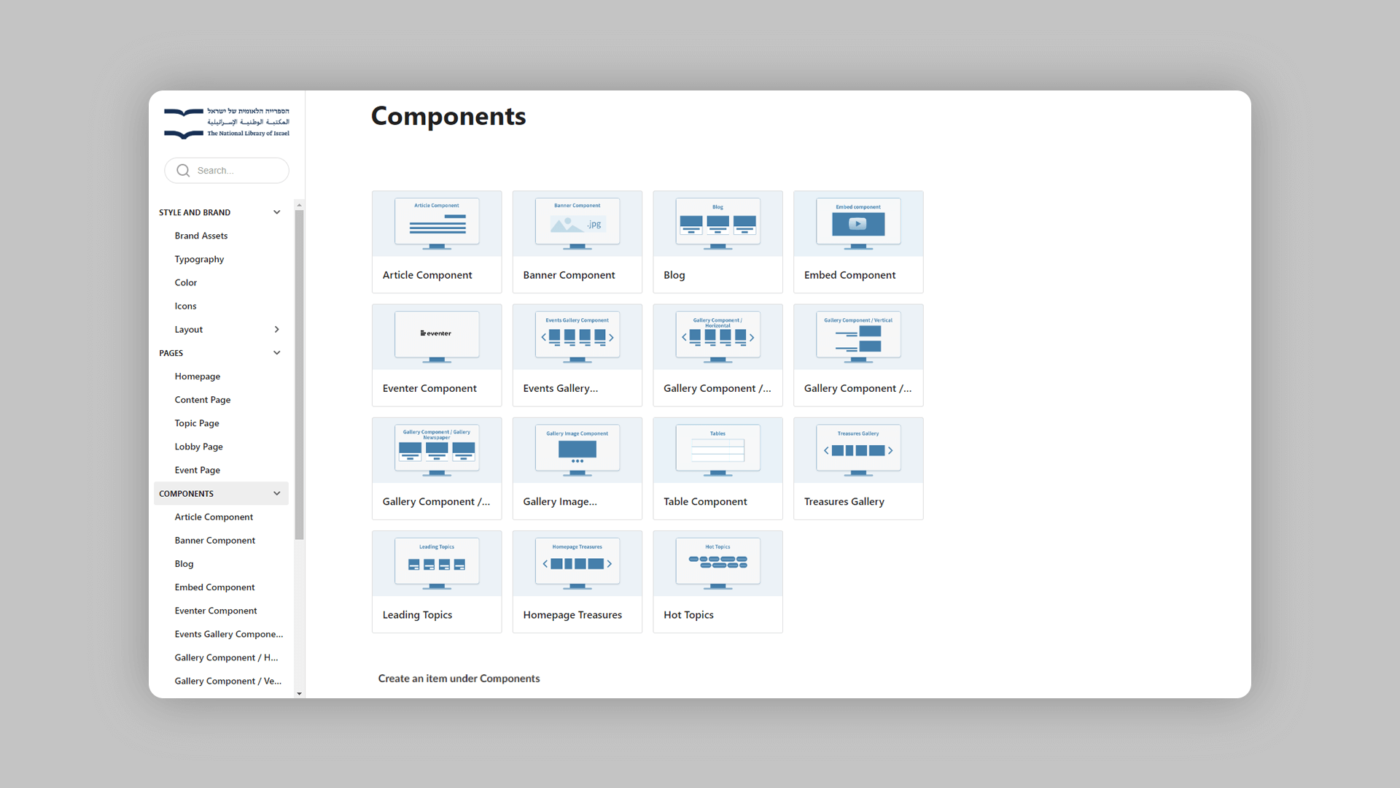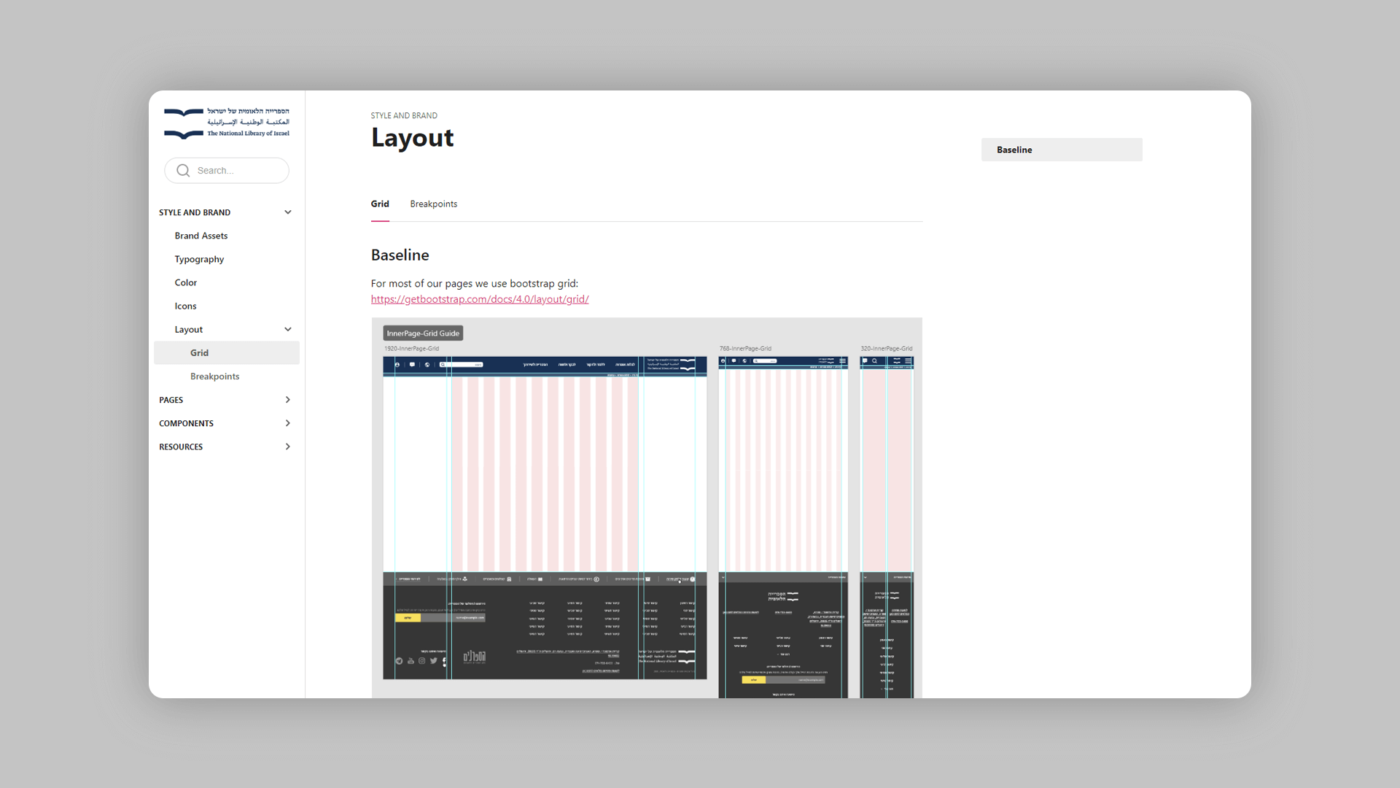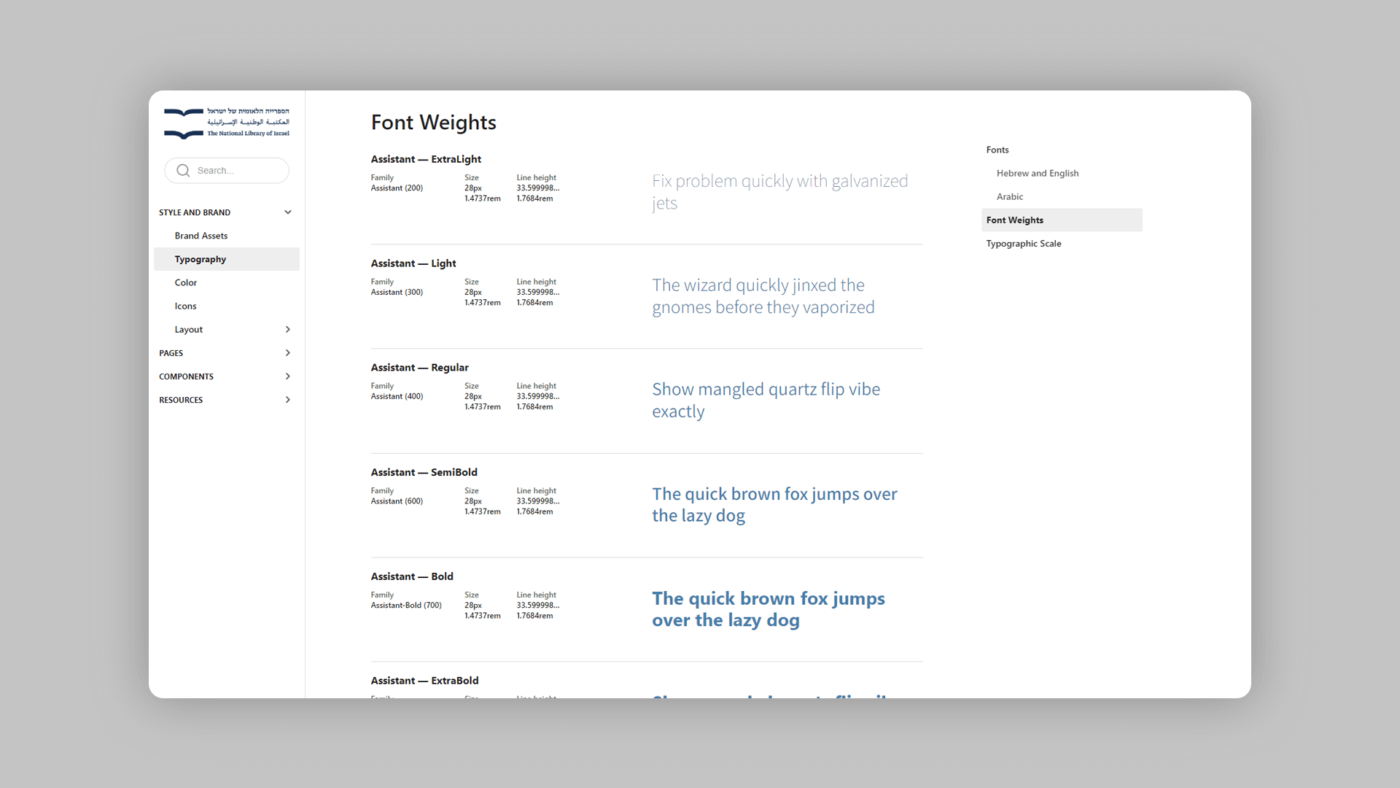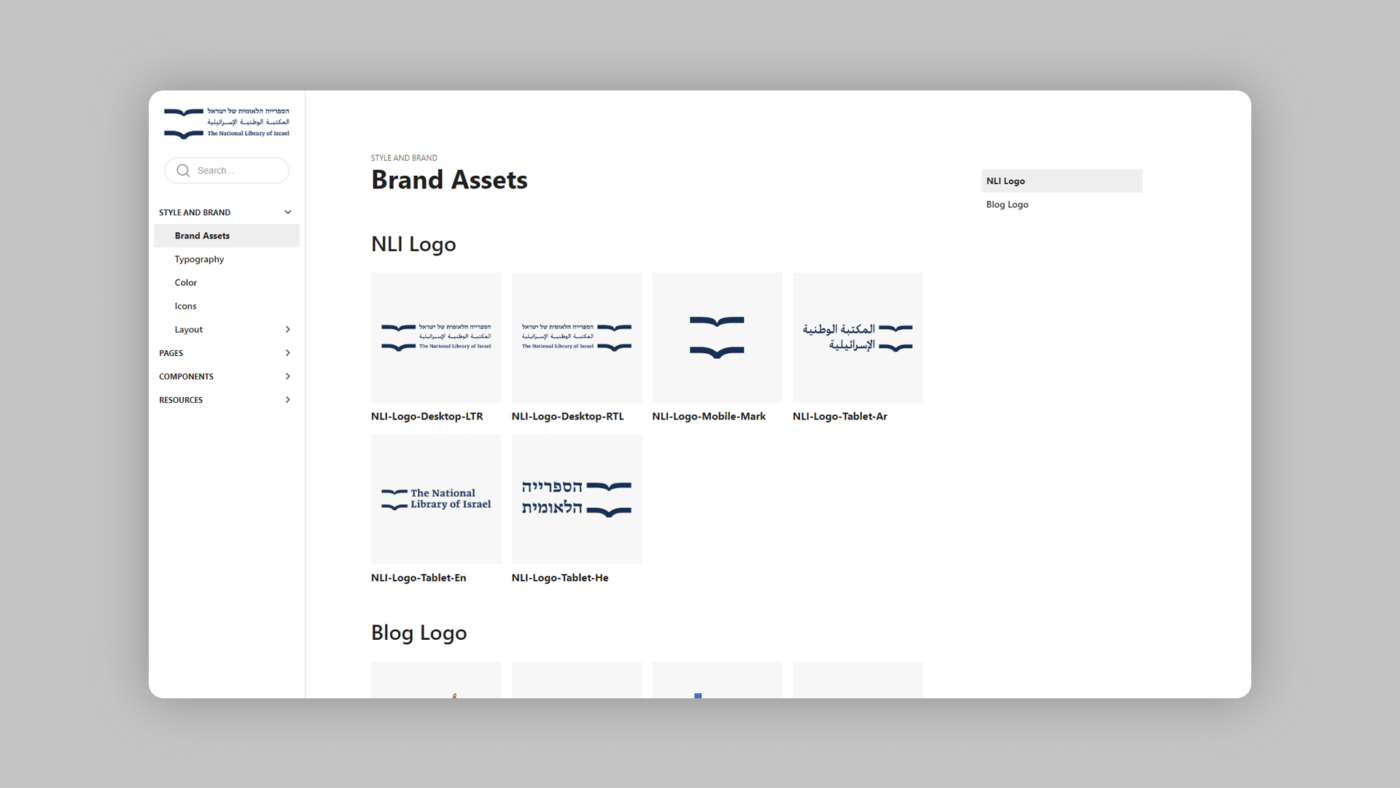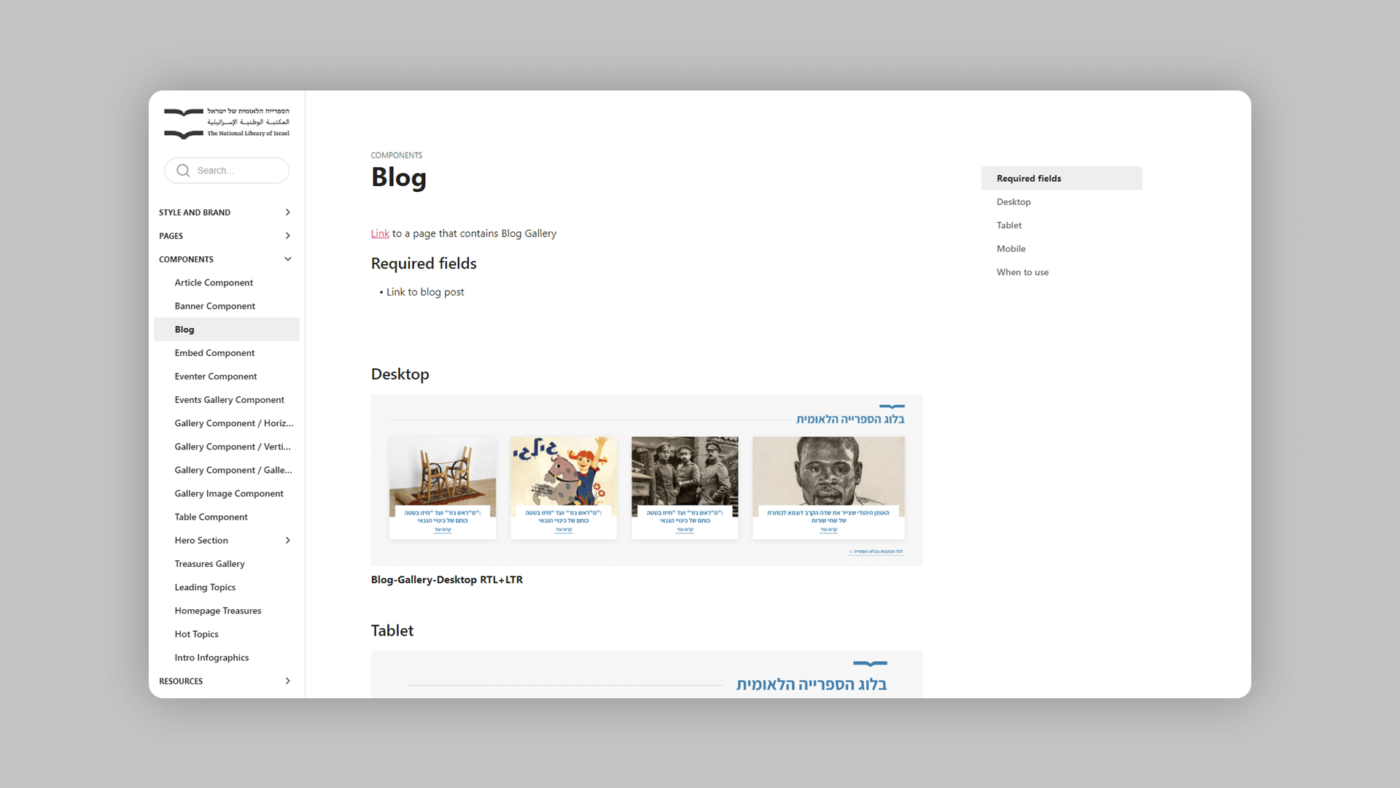TIME PERIOD: December 2018 – Current Time
CLIENT: The National Library of Israel
ROLE: Initiator, Lead Product Designer, UX, UI, prototyping, visual research, mockups
CASE STUDY
The National Library of Israel – DESIGN SYSTEM
Establishing NLI Design System
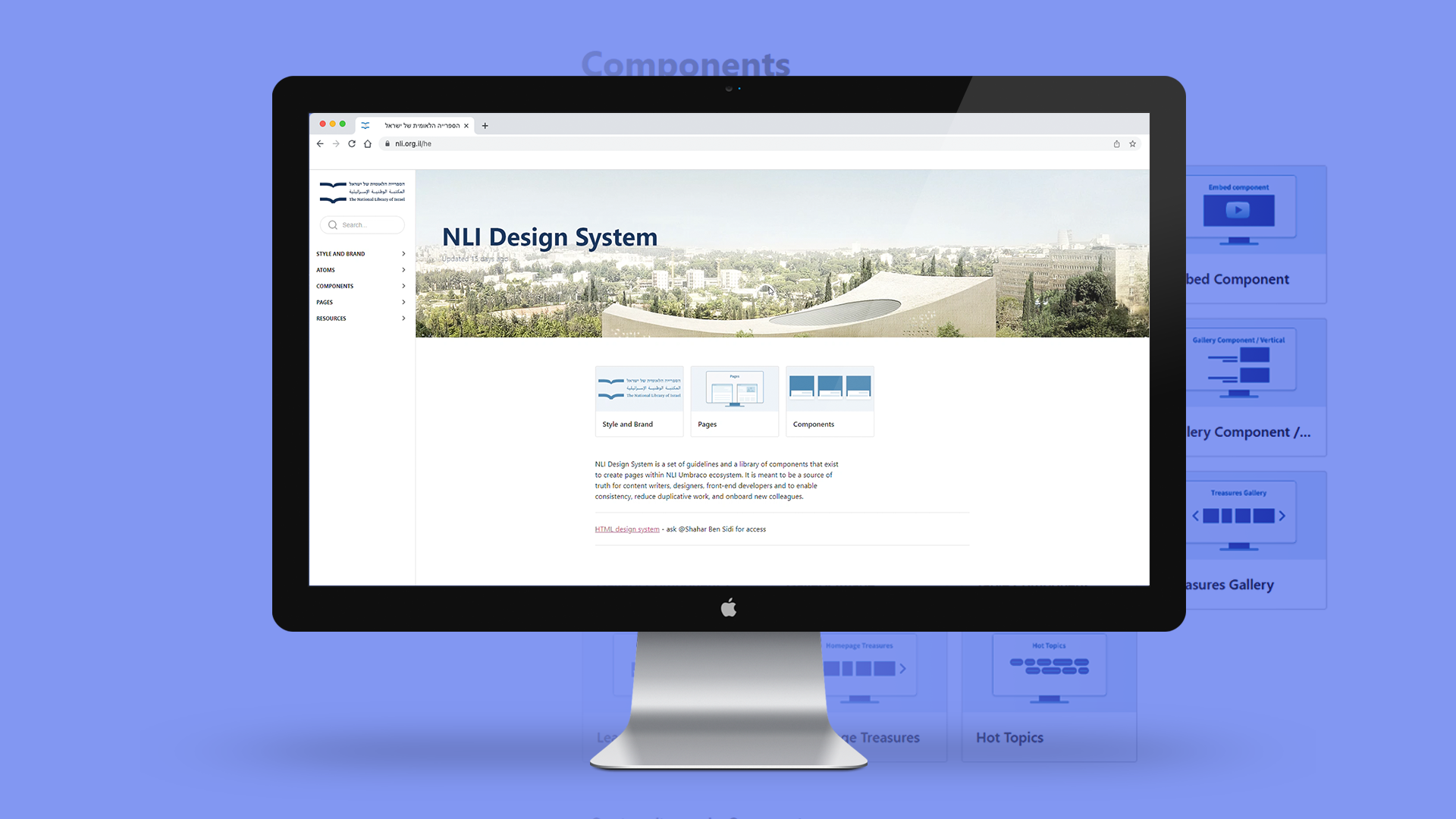
OVERVIEW
The Library’s website was built in 2012 and in 2016 homepage was redesigned – along with the establishment of the digital department.
Along with the main domain, the Library has a lot of other projects and partnerships with different organizations.
Each of their websites has their own look and feel.
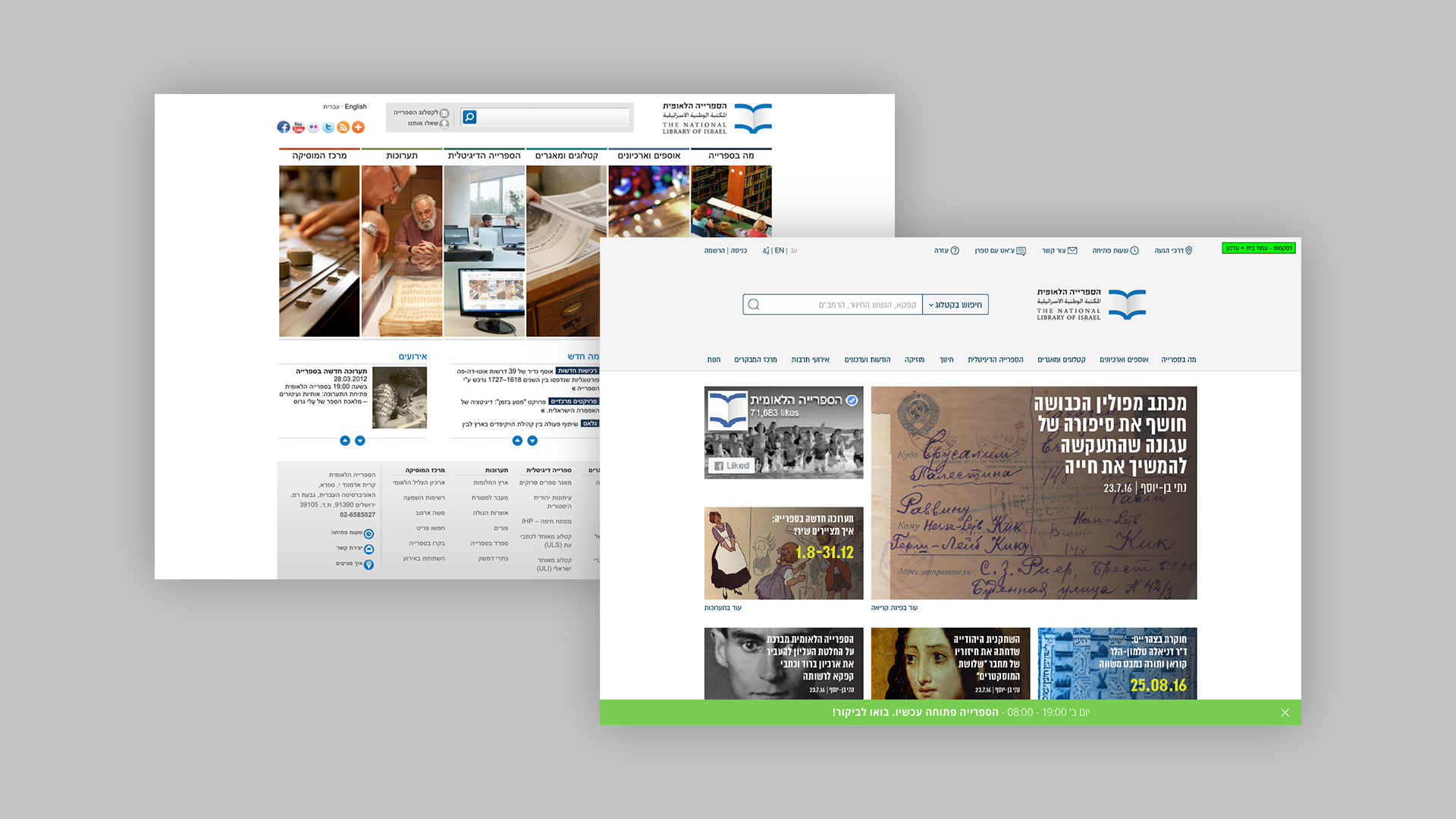
2012 WEBSITE VERSION AND 2016 WEBSITE VERSION.
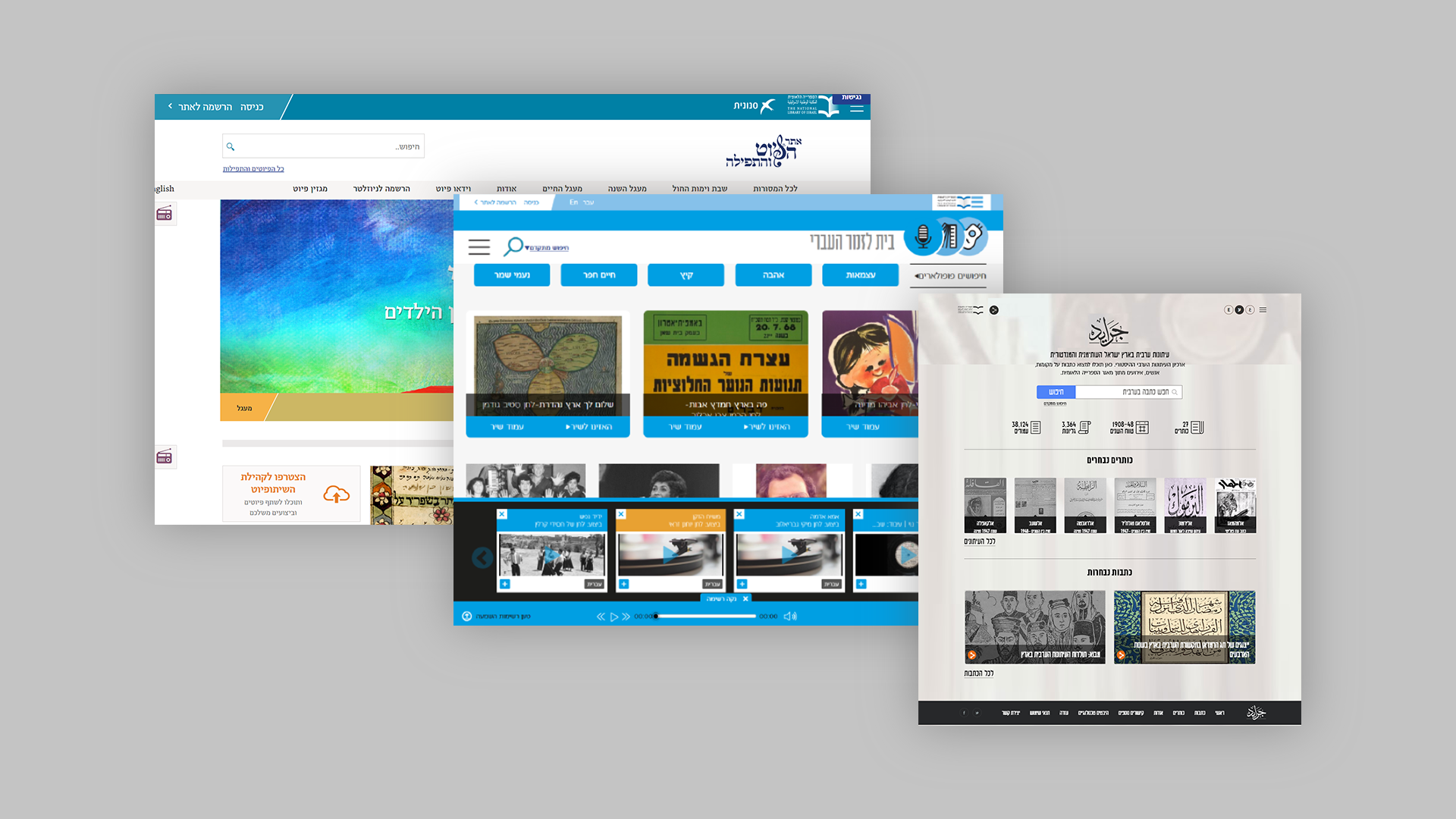
PART OF THE VARIETY OF SITES UNDER THE LIBRARY DOMAIN – EACH OF THEM HAS A DIFFERENT LOOK AND FEEL.
Goals
Our goal as in-house design studio was to convince stakeholders and dev team to create common ground in design for all of the domains. This would not only help creating coherent brand, but could lower costs and dev time for the all of the teams.
Methodology
We designed the system according to the concept of “atomic design”.
In this concept, there are five levels of system components.

“ATOMIC DESIGN” 5 LEVELS OF SYSTEM COMPONENTS.
Atom:
In the physical world an atom is the basic element of a material, in parallel to the internet world atoms are HTML tags, buttons, input fields, etc.
Furthermore, an atom can contain abstract values such as fonts, color palettes, and animations.
Molecules:
Molecules are atoms grouped together and form the smallest and most basic unit of a component.
An input field alone and a button alone are useless, but if you combine them together they become functional.
Organism:
An organism is a group of molecules grouped together to form a complex and unique interface component.
Template:
A template contains a cluster of components (organism) that together form a page.
The template is a page-level component that displays all the components needed to create a page
In a way that gives full context to the 2 system components from the previous levels
(organism and molecules).
Pages:
Pages are a full representation of the template with real content.
Pages contain real content in different variations on a template in order to present the final interface.
The National Library of Israel Design System
The design system of the National Library is a system consisting of reusable components. Combining these components in a different order and context allows for the diverse creation of pages and applications. This system not only presents a visual expression of components, but the main emphasis is also that it functions as an ecosystem and strives to affect all the organization’s digital assets (a change made in one place in the system will resonate across the entire system).
This system is not a finished and final product, but a solid foundation that enables the development of both the Design System – and the various products of the organization in accordance with the needs of the various products in a coherent manner.
THE NATIONAL LIBRARY OF ISRAEL – DESIGN SYSTEM/p>

